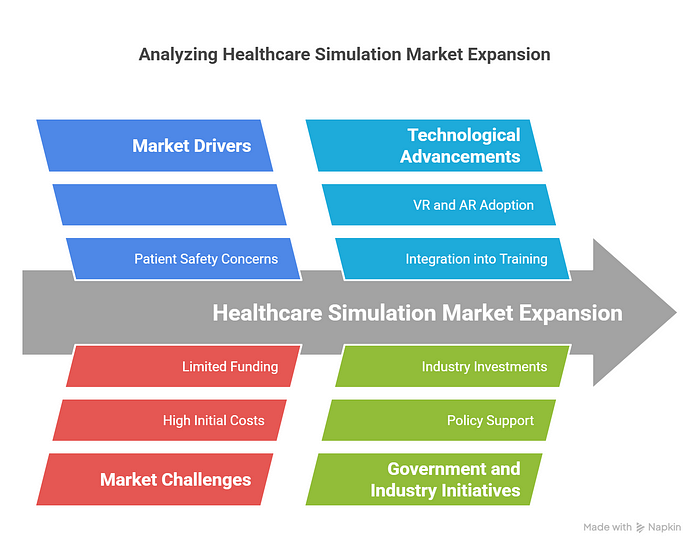Allied Market Research published an in-depth report on the patient simulator market, projecting it to reach $1,221.83 million by 2032, up from $530.3 million in 2022. The market is anticipated to grow at a CAGR of 8.7% from 2023 to 2032. The study offers a comprehensive analysis across segments on the basis of type, application, and end-use industry, highlighting key trends and growth drivers. This detailed insight is designed to support businesses in identifying strategic investment opportunities within the evolving market landscape.
Market dynamics
The expansion of the industry is driven by increase in concerns over patient safety due to rise in medical errors, particularly in diagnosis and medication, as noted by the WHO. Moreover, surge in adoption of advanced simulation technologies, including VR and AR, along with initiatives by key players and governments to improve healthcare training, propels market growth. Furthermore, rise in incidence of chronic diseases, demand for minimally invasive surgeries, and healthcare institutions integrating simulation into curricula further fuel demand for these simulators. However, high initial costs, ongoing maintenance expenses, and limited funding in developing regions pose challenges to adoption of these advanced devices, especially among smaller facilities and medical institutions.

AI-integrated patient simulators and precision therapies
Modern patient simulators have started emphasizing precision, personalization, and integration with AI. For deep brain stimulation (DBS), innovations include segmented and directional leads for targeted current delivery, implantable pulse generators (IPGs) with multiple independent current control, and advanced programming algorithms.
Miniaturization of devices and improved rechargeable batteries enhance patient comfort and reduce maintenance needs. Neuronavigation and real-time neuroimaging now enable more accurate targeting of brain regions in therapies such as transcranial magnetic stimulation (TMS).
Closed-loop systems, which adjust stimulation based on real-time neural feedback, are refined, and AI is increasingly used to optimize protocols and predict outcomes. These advancements collectively aim to improve efficacy, safety, and the patient experience in neuromodulation therapies.
Regional insights
In 2022, North America led the patient simulator market in terms of revenue due to a strong focus on patient safety, demand for minimally invasive surgeries, technological advancements, and established key players. Meanwhile, Asia-Pacific is poised for the highest growth, driven by government initiatives to improve healthcare infrastructure, rise in incidence of chronic diseases, and need for skilled professionals. The region also benefits from the presence of major companies such as CAE Inc. and Laerdal Medical that play a significant role in lowering training costs and increasing R&D activities, thereby making it a promising hub for medical simulation market expansion.
Key players listed in the study
The research report features a dedicated section on company profiles, delivering a comprehensive overview of each organization. This section covers essential details such as company snapshots, executive leadership, product and service portfolios, operational segments, and overall business strategies. It offers insights into R&D investments and outlines key strategic initiatives and developments. Notably, the report includes profiles of prominent industry players, including:
- CAE Inc.
- MEDICAL-X
- Simulab Corporation
- Surgical Science Sweden AB
- Gaumard Scientific
- Kyoto Kagaku Co., Ltd.
- Laerdal Medical, Mentice AB,
- Limbs & Things LTD,
- MedVision
In essence, the AMR report presents a comprehensive analysis of the patient simulator industry, addressing all key facets of the market. It provides in-depth insights into the strategies adopted by leading multinational companies and interviews with stakeholders & industry participants. This makes the report a valuable resource for new entrants looking to understand the dynamic and evolving market landscape.
Read More Blogs:



0 Comments